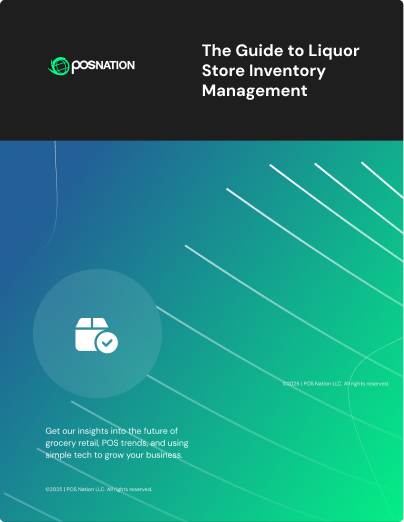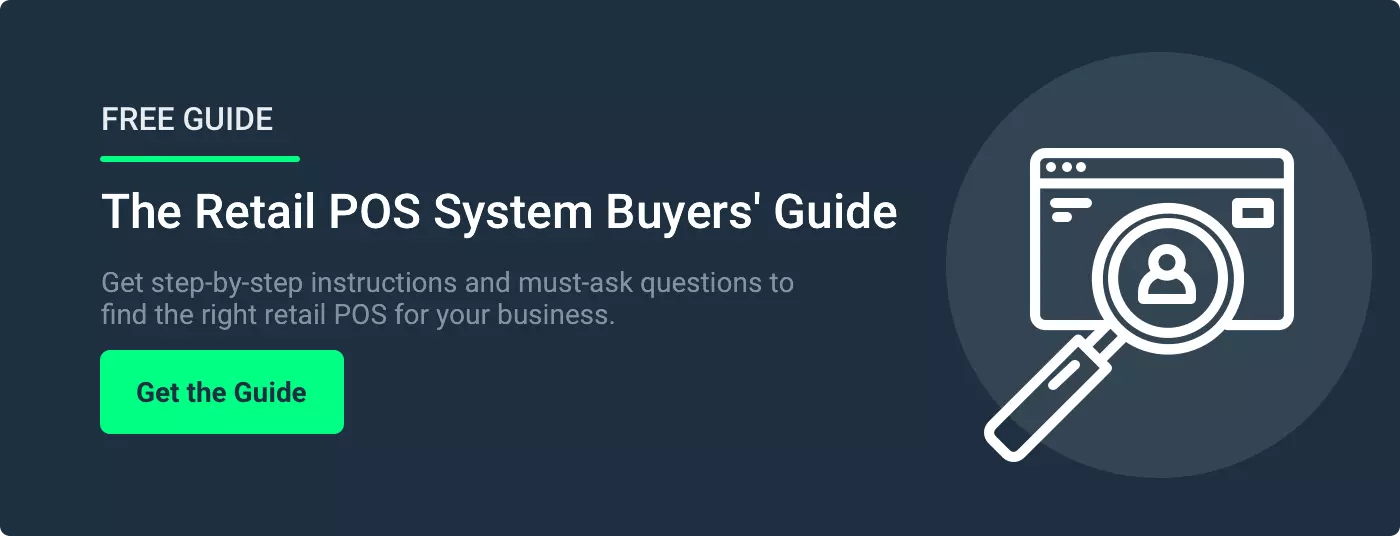You can either have fast sales and happy customers or stagnant stock and tight cash flow. Which are you choosing?
It might seem pretty obvious, but without understanding inventory KPIs and defining what an inventory turnover ratio is, you won’t be able to measure it effectively — and you won’t improve it. Instead of having boxes of last season’s products cluttering your stockroom and customers browsing empty shelves, you can take control of your inventory and get your business running like a well-oiled machine.
In this article, we’ll explore what inventory turnover ratio means, ideal turnover rates for small retailers, and tips to improve your ratio using your retail store point of sale (POS) system. With the right strategy, you can increase profits and keep customers coming back.
Defining a Good Inventory Turnover Ratio
The inventory turnover ratio is a metric you should understand as a small retailer. It’s a simple formula that compares the cost of goods sold to the average inventory for a period. To calculate it, divide the total cost of goods sold by the average inventory value for the timeframe you’re analyzing.
As a small business owner, paying close attention to your turnover rate is essential — this number indicates how efficiently you manage inventory. It shows how quickly you sell and replace items. Higher ratios mean stock is moving off shelves, and you’re replacing it quickly. Slow turnover suggests stagnant merchandise and cash flow issues.
Related Read: Cost to Revenue Ratio [Definition, Importance, and What's a Good or Bad Ratio?]
If you don’t monitor inventory turnover, you could be left with excess inventory that ties up cash you could use for other investments. Dead stock also clogs up your warehouse. Also, your customers want to see new and exciting things — a lack of fresh inventory can drive down sales.
However, extremely high turnover ratios aren’t good, either. Running out of key items is frustrating for customers. The key is finding a healthy balance: rapid turnover without sacrificing customer satisfaction and margins. Set realistic goals for your unique business without going overboard.
Why Inventory Turnover Matters for Small Retailers
Aside from showing you how well you manage inventory, focusing on inventory turnover also shows how in-demand your products are — faster turnover signals which items sell quickly. You can then identify “hot” products and set up a reorder schedule. On the other hand, slow turnover pinpoints products that aren’t appealing to your customers.
Monitoring turnover also impacts your cash flow and profit margins significantly. When inventory moves faster, it improves cash flow. You can free up money from stagnant stock to reinvest in fresh products. However, you need to balance turnover with healthy margins.
Related Read: Gross Profit Margin vs. Net Profit Margin: Which Is More Important?
Your key focus should be profitable sales velocity. For slower sellers, consider strategic markdowns to recoup some margin. Be careful not to sacrifice profit just to increase turnover — rapid sales don’t help much if items are sold at razor-thin margins or a loss.
What Is a Good Inventory Turnover Ratio?
As is often the case, a good inventory turnover ratio depends on various factors.
Start with industry averages in your retail niche. Use the average as a baseline (not a goal). They’re just a starting point; you’ll need to fine-tune them based on your business. Think about store size, business model, supply chain, and more.
Consider factors like seasonality — some segments see significant fluctuations at different times of the year. Also consider your product mix. For example, grocery stores stock perishable goods like produce and baked goods, which have a high turnover.
Setting a realistic target turnover rate is a good idea. Consider your storage costs, flexibility to restock, and the nature of your merchandise. Advanced inventory management software can support higher velocity, as you’ll have the tools to manage your supply chain.
Tips for Improving Your Inventory Turnover
There are various ways to create a healthy inventory turnover rate:
Review Sales Reports Regularly: Make it a habit to analyze daily sales reports. You can determine what’s selling fast and what isn’t so hot. You can adjust inventory levels based on these insights. Avoid stockouts by reordering top sellers quickly. If something is gathering dust? Free up cash flow by discounting slower movers or getting rid of dead inventory. Keep historical sales data to make more intelligent predictions about future demand.
Adopt Just-in-Time Inventory: With this approach, you order inventory as needed rather than stockpiling excess merchandise. Just-in-time can be a game-changer for grocery stores or other businesses with perishable goods. It reduces inventory carrying costs and ensures you have what you need in stock. It requires conscientious sales forecasting, though, to ensure you have enough top sellers. You also need supply chain flexibility to rapidly reorder hot items.
Related Read: What is Smart Inventory in Retail? 4 Reasons Your Store Needs this Capability
Use Inventory Management Software: Automated inventory management takes the stress out of managing your store’s inventory by taking over tasks you’d typically have to handle manually. You want to reduce human error as much as possible and keep your inventory accurate — automated systems do just that. Smart POS systems can predict changes, forecast ideal inventory levels, automatically generate purchase orders, and recalculate inventory immediately after a transaction.
Offer Sales and Discounts: When slower-moving items gather dust, you need to get strategic. Give them a little nudge with some well-time markdowns! Customers love a bargain. The key is to create a sense of urgency, especially for seasonal items. Keep a close eye on discounts — you don’t want to give products away too cheaply and sacrifice your profit margins.
Creating a Good Inventory Turnover Rate: Use the Right Tools
The inventory turnover ratio is a big deal for small retailers. It measures how rapidly you sell and replace inventory. To set realistic goals, start with industry benchmarks as a reference. Then, dive into your sales data, embrace inventory management best practices, and be adaptable.
You want to steadily up your inventory velocity over time. The sweet spot is finding a turnover rate that balances sales growth and healthy profit margins. To make this happen, let data guide your decisions.
And where can you find that data? In your POS system! Real-time inventory tracking keeps counts on point. Robust reporting and analytics give you a peek into sales trends and turnover statistics. And with automated reorder points, you’ll never miss a sales opportunity.
We work with over 10,000 retailers at POS Nation, providing a modern and intuitive POS system. You'll have complete visibility into turnover with integrated inventory management, smart purchasing, and custom reports.
To learn more about how we can help you manage your store, schedule a demo with our retail experts today!








 by Brian Sullivan
by Brian Sullivan


 by Graham Hoffman
by Graham Hoffman